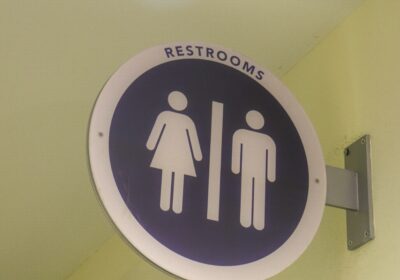Leave the drinking to the adults at Raymond James Stadium

ORACLE FILE PHOTO/JACOB HOAG
In the life of a college student, alcohol is a huge motivator. Many students make it week to week with the promise of unsupervised, boisterous fun sponsored by one alcohol-fueled event or another.
For instance, many students and alumni make a habit of tailgating for sporting events. However, tailgates usually feature beer and wine coolers.
For Bulls fans, the only place to get mixed drinks at Raymond James Stadium during football games has been on the club level, where tickets often cost hundreds of dollars more than non-club seats.
On Thursday, Tampa City Council members approved liquor sales at the stadium outside of the club level.
Possibly as soon as the Taylor Swift concert Oct. 31, of-age patrons will be able to purchase mixed drinks throughout the venue, according to ABC Action News.
It goes without saying, many underage students drink alcohol, though countless studies make it abundantly clear that the effects of alcohol consumption in adolescence are detrimental to the development of the brain.
One study from the National Institute on Alcohol Abuse and Alcoholism revealed “one brain area that seems to be particularly affected … is the hippocampus, which plays a role in numerous cognitive functions, including learning and memory.”
However, in spite of substantial evidence, there are those who believe the drinking age should be lowered to 18 or removed entirely.
This argument holds that decreasing and enforcing the drinking age will limit the desire for alcohol by making it available to the demographic for which it holds the most fascination.
Wrong.
Decreasing the drinking age will only lower the age at which people are exposed to it because alcohol companies will begin to market to lower age demographics. And that’s the problem: marketing. The drinking age hardly has anything to do with it.
When federal investigations into the claims made by cigarette companies found that doctors were lying and cancer was creeping into the lungs of millions of far-too-trusting smokers, the Surgeon General insisted companies slap a warning label on the box.
WARNING: THESE WILL ALMOST CERTAINLY KILL YOU.
“Joe Camel, a Giant in Tobacco Marketing, is Dead at 23” proclaimed the headline of one New York Times article that detailed the end of the era that saw the huge popularity of campaigns like Joe and others.
The danger of these campaigns — making the smoking man an idol — is completely and more perfectly employed by alcohol companies. The Budweiser dog has replaced Joe Camel, and the Marlboro Man is now the Most Interesting Man in the World for Dos Equis.
The solution to underage drinking is not to change the age at which alcohol is legally available. Rather, it is to change the way alcohol is advertised.
Overseeing and adjusting the way alcohol is marketed will change the way it is perceived and virtually eliminate the need for advertisements against drinking.
In a study by the Rand Corporation, researchers found “exposure to alcohol ads is directly linked to subsequent drinking in mid-adolescence.”
Underage drinking is much more serious an issue than many believe, without even taking into consideration the number of sexual or physical assaults and car accidents that are a result.
Bulls may not drink as much as you think, but we are certainly inundated with advertisements inviting us to. Alcohol companies are not stupid. They know perfectly well that students are as enticed — if not more — by fit, bikini-clad women or a sexy pair of six-pack-abs in swim trunks, and they continue to aim for younger and younger audiences in their advertisements.
We need to change the way advertising companies market the product if we want to stop underage drinking.
I’m looking at you, Don Draper.
Grace Hoyte is a junior majoring in English literature.








